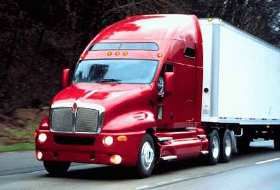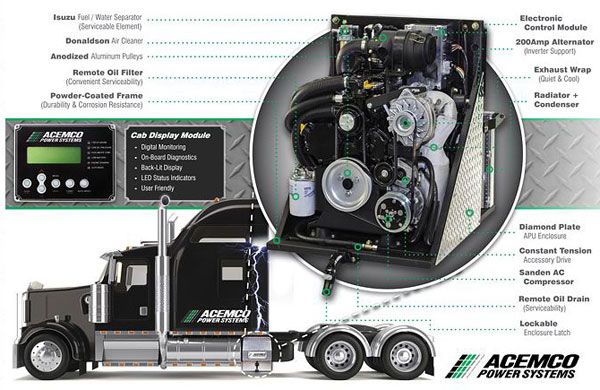How Does A Dog Get Into The Cab Of A Truck Anyway?
Topic 19524 | Page 1

Oh, here is a dog climbing up and DOWN a TALL ladder onto a roof!
https://video.search.yahoo.com/yhs/search;_ylt=AwrTccGaJxhZFmcAgDMPxQt.?p=dog+climbing+ability&fr=yhs-itm-001&fr2=piv-web&hspart=itm&hsimp=yhs-001&type=wbf_ezdnldd_17_14_ssg01#id=15&vid=92423604d681a6e99db857eb9c34d074&action=view
So, I would think getting in and out of a semi should be a 'duck shoot' for him.
Dm:
Dispatcher, Fleet Manager, Driver Manager
The primary person a driver communicates with at his/her company. A dispatcher can play many roles, depending on the company's structure. Dispatchers may assign freight, file requests for home time, relay messages between the driver and management, inform customer service of any delays, change appointment times, and report information to the load planners.Fm:
Dispatcher, Fleet Manager, Driver Manager
The primary person a driver communicates with at his/her company. A dispatcher can play many roles, depending on the company's structure. Dispatchers may assign freight, file requests for home time, relay messages between the driver and management, inform customer service of any delays, change appointment times, and report information to the load planners.
Totally depends on the dog and owner. Small enough lift them in. Big and young enough get in themselves. Some have custom ramps made.

Totally depends on the dog and owner. Small enough lift them in. Big and young enough get in themselves. Some have custom ramps made.
I was hoping to hear from a driver who has a dog. Preferably a German Shepherd. My requirements would be a professionally-trained security dog that is highly agile, at least as agile as any good police dog. I would prefer a dog that can clamber in and out of any rig using only the standard steps with nothing custom made. Lifting a dog as heavy as the typical Shepherd in and out is not only embarrassing but hard on the human spine.

I saw a guy with a rottweiller like mix the other day and he had some folding steps for the dog. Watched him take the steps out (folded they were about 3 feet long and width of maybe a foot) and with a quick snap of the wrist they opened up to 3 sturdy steps for the dog. That's probably the most comfortable set up a dog could ask for. Bet google has more info.
I've owned German Shepherds for years and I take him all the time in my lifted pickup with 35" tires, but never had one in a big rig. My big concern would be whether or not there's enough space for him to squeeze in between the seat and the dash, and under the steering wheel. That's not a very large space. I can't see him getting up over the driver's seat from the top step without making some sort of circus-type jump and balancing act, having to launch off the top step.
And of course what if he makes the attempt, gets distracted, misses the mark, and bumps into the seat on the way up? He's gonna come crashing down on his back.
Or what if he's not capable of committing that type of energy or power? Maybe he's feeling real sick or has an injured hind leg? Then how do you get him in the truck?
And getting out? What about when the ground is icy, or the steps are wet or icy, or the ground is real muddy? I can't imagine them jumping out or trying to climb down with some sort of circus balancing act.
I would say you'd have to come up with some sort of custom ramp or ladder setup in order for this to work consistently over a long period of time without injuring him or hurting yourself trying to get him in or out. I know what a highly trained Shepherd can do, but they normally only do those kind of things once in a great while or in a controlled training environment, not every single time they have to go to the bathroom in all conditions.
HOS:
Hours Of Service
HOS refers to the logbook hours of service regulations.
I have tried several dog ramps. I would recommend the one from petsmart. It's a little on the expensive side ~$120 if i remember, but the quality is excellent.

I have tried several dog ramps. I would recommend the one from petsmart. It's a little on the expensive side ~$120 if i remember, but the quality is excellent.
Don't these ramps take up precious space inside the trucks since there seems to be precious little personal space?
I have now realized that company trucks don't have the most generous amount of living space for vehicles in the world. Perhaps, truck manufacturers haven't yet caught up with the fact that canine companionship is common and designed their trucks accordingly.
Remember, a police working dog has to work in adverse weather conditions too.
A trucker probably needs a serious top-of-the-line law-enforcement-quality dog.
I have now realized that company trucks don't have the most generous amount of living space for vehicles in the world. Perhaps, truck manufacturers haven't yet caught up with the fact that canine companionship is common and designed their trucks accordingly.
Truck manufacturers have barely noticed that a human being spends time outside of the driver's seat area. I don't think they're going to spend any time or effort changing the design to accommodate dogs, especially big dogs.
A trucker probably needs a serious top-of-the-line law-enforcement-quality dog.
This gets to the nub of the problem. How can a truck driver keep themselves safe at all times? We've already discussed carrying firearms and other weapons, so no need to cover that again. And as you're beginning to notice, keeping a serious top-of-the-line law-enforcement-quality dog on a truck presents difficulties as well. We haven't even gotten to the topics of keeping that fine animal in good physical condition with regular exercise, ongoing socialization, etc.
And then there's the problem of how to stay safe when you can't bring the dog with you. Sure, your truck is safe because your dog is there when you go into the restaurant or walk into the Walmart to shop. Keep in mind that your dog may not be if it's very hot or cold and you don't have an APU or the ability to idle the truck to keep your dog in a healthy environment while you're away, so we'll have to now do additional research on companies with trucks that allow that.
But what about you? How are you going to be safe at all times living the romantic lifestyle of a nomad trucker if you can't have any serious weapons and you can't bring your serious top-of-the-line law-enforcement-quality dog into the Denny's or the stall at the mosquito-infested restroom at some rest area in Minnesota at 3:00 a.m.?
The solution is obvious, although no one has really wanted to say it out loud up to this point. But I think it's time we let you in on an open secret: Before you become an OTR trucker, the best and most necessary thing you must do is to turn yourself into a weapon.
I don't want to derail the thread too much, so I'll just say that most people start with one basic martial arts style, then add a second and maybe third style as the years progress. It's best, of course, to go to as many tournaments as possible to sharpen your skills in a safe environment. Some even get so good that they start doing cage matches at UFC tournaments, although generally that's not entirely necessary before starting your truck driving career. Once you have attained a third-degree black belt in most of your martial arts styles, you will be able to defend yourself from the average thug who poses a threat at truck stops, Walmart distribution centers, biorefining loadout facilities, steel mills, warehouses at the ports, etc.
Of course, that brings up the question of how you should get started, if you haven't already. I'm of the opinion that it doesn't really matter which style you learn first, as long as it is a good, overall system capable of providing a sound defense for yourself and those you love who happen to be with you. (It's much better if your wife and children learn to defend themselves, naturally, but not everyone brings them along in the truck. Trucks aren't really designed with a lot of space and comfort for passengers. So it may be better to teach them how to handle firearms if they're going to be home all the time while you're out on the road.)
Muay Thai, Wing Chun, and Brazilian ju-jitsu are really popular these days, especially among the UFC crowd, but again, any complete system will do to begin with. The key is to practice every day. I personally started with tae kwon do, then added aikido and finally judo, and have developed my own personal style out of the mix of those three (and a little kung fu I picked up along the way), but that's considered old school these days. The point is that it doesn't really matter as long as you work hard to turn yourself into a weapon. Then, and only then, can you be completely safe wherever you go as a truck driver.
And no, I haven't really noticed any dojos near truck stops in my travels. This is something you really need to master before you think about going to school to get your CDL or which company is best to start with. There's no real point in doing all that work if you haven't even solved the more pressing problem of personal safety on the road, is there?
Now that I've dragged this topic out into the open, maybe other drivers will open up about their experiences. I know Old School has a pretty interesting story about being attacked by three dozen members of a Chinese tong when he was waiting to deliver a load of aluminum, and Daniel B. told me a harrowing tale of having to fight his way through an angry mob of animal cruelty protesters that surrounded his truck while he was away in the Love's store after fueling (he was carrying a load of frozen chicken) , but those aren't really my stories to tell.
In any event, ravenswood, I hope this helped clarify some things, and that you're convinced now that it's time to get started on turning yourself into a weapon before even thinking of becoming a nomadic truck driver.
CDL:
Commercial Driver's License (CDL)
A CDL is required to drive any of the following vehicles:
- Any combination of vehicles with a gross combined weight rating (GCWR) of 26,001 or more pounds, providing the gross vehicle weight rating (GVWR) of the vehicle being towed is in excess of 10,000 pounds.
- Any single vehicle with a GVWR of 26,001 or more pounds, or any such vehicle towing another not in excess of 10,000 pounds.
- Any vehicle, regardless of size, designed to transport 16 or more persons, including the driver.
- Any vehicle required by federal regulations to be placarded while transporting hazardous materials.
OTR:
Over The Road
OTR driving normally means you'll be hauling freight to various customers throughout your company's hauling region. It often entails being gone from home for two to three weeks at a time.
HOS:
Hours Of Service
HOS refers to the logbook hours of service regulations.OWI:
Operating While Intoxicated
APU:
Auxiliary Power Unit
On tractor trailers, and APU is a small diesel engine that powers a heat and air conditioning unit while charging the truck's main batteries at the same time. This allows the driver to remain comfortable in the cab and have access to electric power without running the main truck engine.
Having an APU helps save money in fuel costs and saves wear and tear on the main engine, though they tend to be expensive to install and maintain. Therefore only a very small percentage of the trucks on the road today come equipped with an APU.

Are we back to find more reasons to talk ourselves out of trucking?
Try a Belgian Mal - they're smaller than a shepherd or rottie, and a well trained one beats the hell out of both of them (which is why .mil & .leo are favoring them).
You're still going to want to lift them up. They are pretty high strung though.
The problem with a large working breed in a truck is - IT'S CRUEL TO THE DOG. They need room to move around. They need to be able to exercise regularly.
You are basically condemning the animal to living their entire existence in a space not much bigger than the crate they call home, at home (and I'm a firm believer in crate training).
Are you looking for a companion, or a 4-legged-lethal-weapon?
Do YOUR DOG a favor - and if it's a large working breed - LEAVE IT HOME.
Rick
New Reply:
New! Check out our help videos for a better understanding of our forum features

















Preview:








 TT On Facebook
TT On Facebook
Can your larger dog climb into the cab on his own?
Is a trained German shepherd AGILE enough to climb into a typical Class 7 or 8 truck cab on his own?
Will the truck need any special equipment to accommodate a high-clambering hound?
Remember, some police dogs can scale a 12-foot high wall, I have been told.
Are there any videos of dogs actually getting in and out of truck cabs?
Which cab door does the dog usually get in?
Can large dogs typically negotiate the standard cab steps well?
Here is a video of a dog climbing over a 6-foot vertical chain-link fence so I figure getting into a semi with cab steps should be a no-brainer for this animal.
Can the animal get OUT of the truck as easily as he can get in?
https://video.search.yahoo.com/yhs/search?fr=yhs-itm-001&hsimp=yhs-001&hspart=itm&p=german+shepherd+climbs+fence#id=2&vid=936bd7dfffe971d112901b66523aa87e&action=click